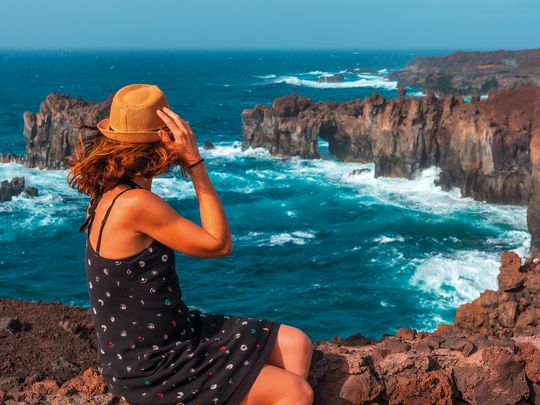
El Hierro (Canary Islands)
The smallest of the Canary Islands is a haven of sustainability thanks to the revolutionary implementation of renewable energies, innovative recycling programmes and the promotion of electric vehicles. The extraordinary contrast between the volcanic landscapes, lush forests and wonderful seabeds led to the island of El Hierro being declared a Biosphere Reserve in 2000. Since then, visitors have been invited to discover the natural delights whilst respecting and preserving the environment.
The flagship for their efforts to become a global benchmark is the Gorona del Viento wind/hydro-electric power station, which is a combination of energy generated by wind turbines and that produced by a waterfall between two artificial reservoirs. This innovative plant has already been able to satisfy the island’s total demand for electricity during prolonged periods of time. Come and visit it, you’ll be really surprised.
Vitoria-Gasteiz (Alava)
The clean air and the abundance of green spaces in the capital of the Basque Country/Euskadi provide a good example for other cities. There is a magnificent historical old town, officially recognised as a Monumental Complex in 1997, which has preserved its medieval layout and is home to a great selection of bars and restaurants. In 2012 it was declared the Green Capital of Europe as a result of 30 years promoting respect for the environment and adopting sustainable development policies.
Take a stroll through the Anillo Verde or Green Ring and explore the natural beauty. The project managed to recover and join up the parks around the periphery of the city. This has resulted in 79 km of urban pathways which are easily accessible from the city centre, on foot or by bike.
In 2016, Vitoria was awarded the Biosphere Responsible Tourism certificate, which recognises it as a sustainable tourist destination.
La Palma (Canary Islands)
Atmospheric conditions on the island of La Palma make it one of the best places in the world for watching the stars. This distinction means you can spend whole nights observing the celestial vault like never before. Climb up to the El Roque de los Muchachos Observatory to enjoy an incredible experience. As the sun goes down, a blanket of clouds surrounds the island below the mountain peaks which gives you an amazing feeling of walking in the sky.
La Garrotxa (Girona)
In the interior of the province of Girona (Catalonia) you’ll find this unique place: a nature reserve full of volcanoes, craters and basalt lava flows covered by dense vegetation. In the north, in the area called Alta Garrotxa, the landscape is steeper and more rugged.
Delightful medieval towns like Olot are the access points to this surprising countryside, which abounds with wonderful hiking routes. Climbing up to the peaks of the Santa Margarida and Croscat volcanoes, and walking through oak and beech forests are unforgettable experiences for any nature lover.
La Garrotxa has the honour of being the first nature reserve in Spain to implement the European Charter for Sustainable Tourism (ECST) and is the model for its application both in Spain and the rest of Europe.
Spain a UNESCO-recognised biosphere reserve
Over a quarter of Spain’s territory is dedicated to the preservation of nature. Spain has been recognised by the UNESCO as the country with the most biosphere reserves in the world and the second highest number of geoparks. UNESCO has declared 44 World Heritage Sites in Spain, 6 of them in natural areas.
Besides, Spain’s beach destinations offer unique opportunities to relax and enjoy the seaside in idyllic natural surroundings. As a result of the cleanliness of their waters and excellent environmental education programmes, over 500 Spanish beaches have been authorised to fly the Blue Flag.













